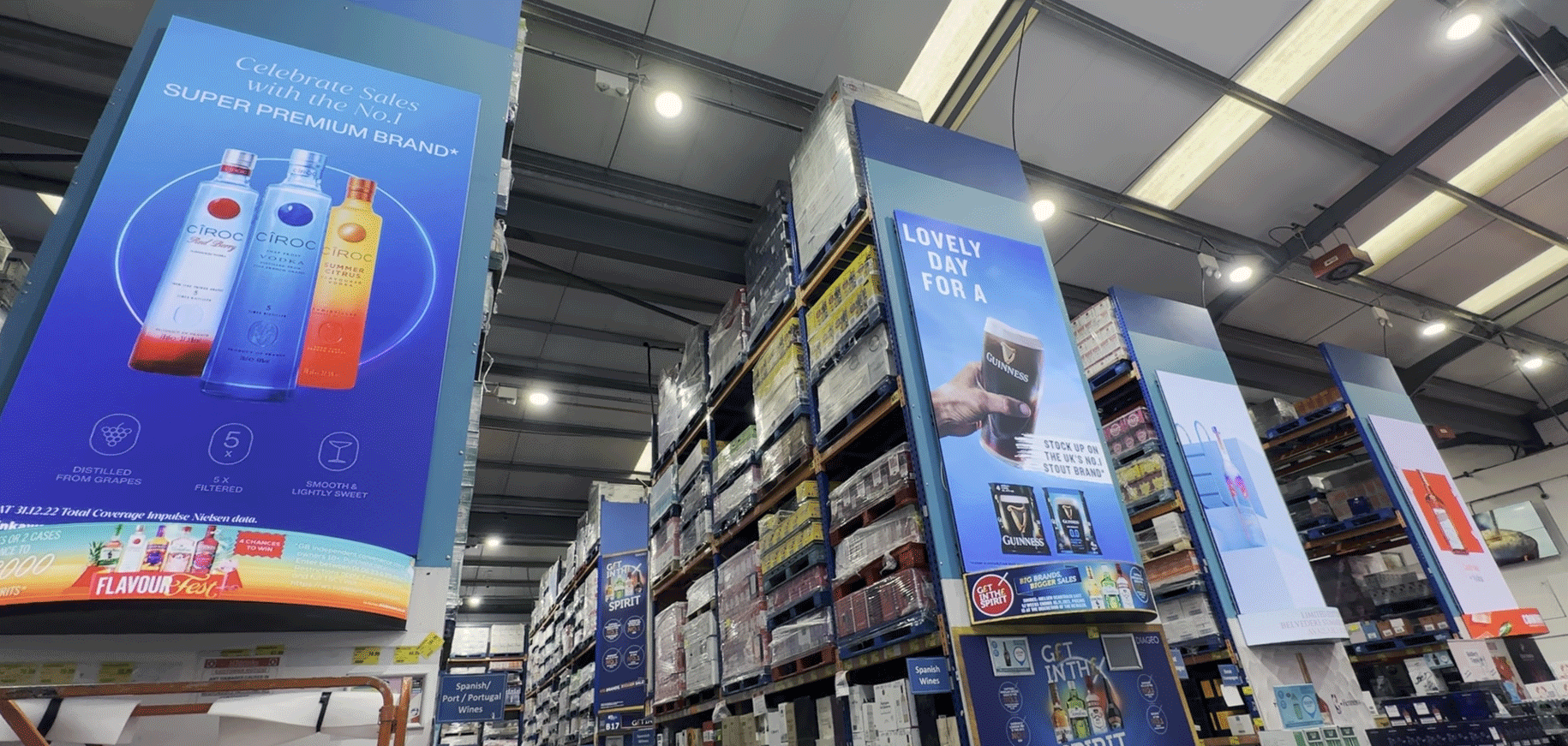The Digital Out-of-Home (DOOH) advertising sector is set to be worth around $30bn by 2029, and the evolution of LED technology is playing a huge role in reshaping the advertising display landscape. DOOH media is rapidly replacing old analogue formats such as static billboards and street furniture.
Here is a look at how LED screens and video walls are transforming the advertising sector, and why they are not just an option for big brands, but can also benefit small to medium sized businesses.
What are the advantages of LED screens for OOH advertising?
High brightness and visibility
LED (light emitting diode) technology was originally used only for basic displays such as digital clocks, due to the limited range of colours available. However, the technology has advanced significantly over the past decade, and it is now possible to create vibrant colour displays with high brightness levels.
LED overcomes the traditional problems of screen brightness in direct sunlight or overcast conditions, as they can automatically adjust the brightness levels to the outdoor conditions. This makes LED screens perfect for both outdoor and indoor advertising purposes, as they are equally visible and eye-catching whatever the location or time of day.
Digital screens can be viewed from far greater distances than traditional billboards, providing a huge competitive advantage in reaching wider audiences, and aligning the brand with a contemporary and forward looking format in the minds of consumers.
Dynamic content
One of the biggest advantages of digital screens is their ability to display dynamic content. This gives advertisers the opportunity to include micro animations, videos, and other moving or rotating image formats that can catch the attention of passersby in an increasingly crowded urban environment.
The content of the screens can easily be changed or updated to keep it fresh and relevant in the eyes of consumers, making it possible to target the most profitable goods according to the time of day, season, public events, weather, and so forth.
Interactive audience engagement
With the rise of experiential marketing, which encourages consumers to engage directly with a brand rather than passively absorb advertising messages, it is now more important to include interactive elements to a marketing campaign.
LED screens are ideal for creating unique and memorable experiences through the incorporation of touch screen displays, customisable product displays, and even augmented reality.
This turns the advertisement from a passive one-way experience into a more entertaining and interactive process, thus increasing brand awareness, loyalty and memorability.
Sustainability and value for money
The initial investment in LED technology may be greater, but digital screens are much more energy efficient than older display technologies. Unlike analogue billboards, they can be updated without undue investment of time, money and labour, and this significantly lowers operating costs, reduces waste and lowers the overall carbon footprint of the business.
With the rise of newer screen formats such as Glue on Board (GOB) technology, it is now possible to take the performance and longevity of screens to a whole new level. The technology involves coating the delicate LED chips with a transparent layer of resin to cover the whole screen.
This tough clear layer protects the LED chips from damage, significantly improving the durability and performance of the screen. The coating also adds an extra dimension of thermal control, preventing the screen from getting too hot or too cold in extreme temperatures.
Furthermore, it also acts as a moisture barrier and protects the screen from other environmental pollutants; an important consideration if the screen is to be placed outside. In indoor environments where customers might be closer to the screen, the GOB layer will protect it from accidental impacts or deliberate attempts at vandalism.
Real time advertising
The LED screens can maximise advertising revenue by displaying multiple advertisements in one day on a single screen, and also offer the opportunity to rent out advertising space and time slots to third parties. The content can be programmed to show messages that are tailored to the viewer’s location, for example to promote nearby retail outlets or restaurants.
The content can be further segmented and personalised through the use of data analytics, which records consumers’ preferences and behaviours to allow for messages that are most appropriately targeted for their needs and interests. Content can also be adjusted to respond to big events such as concerts, festivals, and sports matches.
As capturing and retaining customer attention becomes increasingly challenging, LED technology is one of the best ways to future proof your business.

